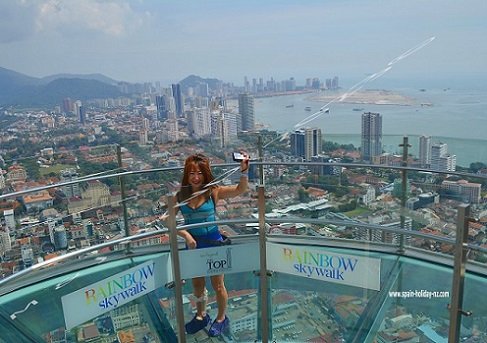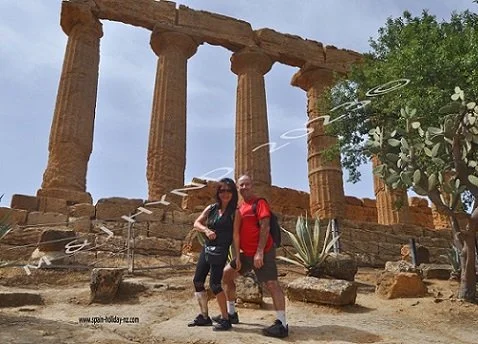AUT EEG-FES Optimal Dose Rehabilitation
I'd been invited to participate in an exciting on-going stroke research at Auckland University of Technology (AUT). It is a new rehabilitation treatment called 'exciteBCI' - this may help with recovery after stroke. ExciteBCI has two parts: A Brain Computer Interface (BCI) and Exercise training.
Participants will receive exciteBCI rehabilitation 3 times a week for 3 weeks but the ‘amount’ of rehabilitation for different people may be different. The Brain Computer Interface (BCI) reads your brain signals while you move your ankle; electrical muscle stimulator provide more stimulus to the ankle (weakened because of stroke).
Previous research has shown that exciteBCI can improve outcomes after stroke - the best 'dose' required is what the research is about. Prior to starting, there are guidelines to ascertain qualification for participation in the program.
The very personable, approachable lead investigator Professor Denise Taylor, met with me in an examination room beside the gym at AIH (AUT Integrated Health) clinic. She asked me questions about myself* and I performed a series of sit-stand-walk-tests, leg movements, series of 'obstacles'** to establish base-line. She would do a similar exercise after my 3-week participation, in all, a five week commitment.
* I would not be able to participate if I had a list of conditions...
** ''thinking'' as well doing the required action at the same time
Q: queries/questions: .. do housework:-
After my emergency operation when I had a massive haemorrhage at my work (for a IT software company, London) in 1995, on our extended Overseas Experience; I was unable to do any caring for others.
When the medical emergency happened: .. I collapsed, unconscious, rushed to the nearest provincial hospital in an ambulance. Lacking the Neurosurgery expertise needed to treat the very acute brain haemorrhage, seven or eight hours later, at a 2nd hospital in central London, I had life-saving open-brain surgery which lasted 9 hours. During that intervening time however, many braincells died, as they were starved of oxygen-rich blood, (brain bleed) before intervention by Neurosurgeons.
Unbeknownst to me, an AVM (Arteriovenous Malformation - I was born with the condition), had ruptured in my brain, catastrophically, causing the massive brain bleed. The aftermath: I couldn't: stand/walk, talk, read, write, remember; in a wheelchair, right-side paralysis, had very severe aphasia, footdrop, clonus, sub-luxed shoulder, the list goes on. Then 6 months later, a radiosurgery procedure: Linear Accelerator to clean-up the remnant of the AVM still within my brain....
''.. F.A.S.T. : NZ-slogan for Stroke, is so very important: Face, Arm, Speech, Time for action to get to hospital. In 1995, 'stroke' hadn't had this publicity, even in the UK...''.
My left side, though not directly affected, felt as if I were under tons of concrete that pressed-down on me, hampered even turning in bed - slept faced up the whole night was now the norm; bed-rails had to be used on the hospital bed, in a 'just-in-case' situation. Muscles of my left side had to do all the work from then on, I slumped in the wheelchair & tired very easily.
To the question, for the current walk-study,..
In central London where I was wheelchair-bound, one-handedly hanging clothes on Central-Heating heaters/radiators in our tiny first-floor apartment was the norm.
In Spain, where we later lived – wheelchair-free, I could hang clothes outside – Murray (my husband) made the correct height clothes-line. Challenges to hang big heavy items (fluffy towels, sheets) as I'm one-handed – I've devised a simple get-around to do it; also, I'd wear my AFO (Ankle-Foot Orthosis – leg brace) from morning till night.
Later, back in NZ, I preferred A-frame airers to rotary clothes-lines which I couldn't reach comfortably… the A-frames were easy to take indoors at the sniff of inclement weather above to arrive.
We lived in a townhouse at one point, consisting of four 4 half-levels: so I'm very careful on stairs/steps - just in case I fell, I'm the only one to call for help, when my husband is away at work...
Medical alarms are great; I wore the alarm-pendant when in the UK. However, due to severe sensation loss on my right, I’d accidentally bumped the pendant and activated the alarm quite a lot, without my being aware of it. My right arm is quite static but the arm & hand sometimes get a bit 'flappable' - it/they move with my body, when trying to reach for something in my wheelchair, one-handedly. Not being able to speak to say what I wanted, which was to cancel the false alarm (severe aphasia) when the assistance-provider rings or fronts-up to our flat, was very stressful. So after about a year, we cancelled the alarm service.
The Walk-Study Program…
The first week of proper-participation in walk-study program, I was re-introduced to the researchers who would be conducting the two-part strategy: the EEG-brainwave analysis, then exercises using FES (Functional Electrical Stimulation) device with a physiotherapist.
1st part of session: (similar to the previous Ankle-study in 2021) – I wore the headgear-device (EEG) to record brain-activity.
when positioned & fitted, electrode-points aligned and connectivity ensured with the equipment, I was ready. I did a few timed, ankle-exercises - each week, the researchers would recalibrate the system anew - the exercises would be tailored for me specifically
next, to the physiotherapist implementing the exercise regime for my sessions throughout the program. Similarly (to AUT-Walk-study in 2018), using EEG+FES device technology - I was set a number of timed, activities & utilising FES device - sit/stand, step-forwards, step-around-objects, step-sideways, walking..
In further weeks, the therapist would tweak exercises and change the parameters throughout the program
'Thinking'' (& 'answer questions' based on my thoughts) ...as well as doing a activity (like: walking) - together? - was challenging. I could just manage do it, at the preliminary walk-study session in 2023 with the Lead Investigator...
Ten to twelve years ago, I didn't do that well at all. Hazy, indistinct pictures (in my mind's-eye) – trying to grasp at the wispy-fleeting thought, before it disappeared; then put into intelligible-words in English (memory-loss; also I had had to re-learn English after my AVM-stroke, enounce & 'pronounce words correctly') - took forever to half-master.
I remember pavement-walking in Auckland around that time - my spatial body awareness was poor; sensation-loss on my right-side (..*where is my right-foot?), paralysed sub-luxed shoulder jutted out from my body & lack of balance – so: to look down, quickly lookup & scan around me, was very necessary. A friend who walked with me was talking - I was distractedly, disjointedly trying walk at the same time and answer...
I had to stop to carry-on the chat or concentrate on my walking - challenging even now, though I'm improving. In a gym there is a physiotherapist, a safe environment, and walking on flat surfaces. Outside walking - unexpected flagstones lifting, loose shingle/strewn rock on the path or the pavement suddenly dips and you're not paying attention... make more of a difference in walking after an AVM-stroke.
Before my AVM-stroke, I used to run up/down stairs & escalators in high-heels (!), in the London underground stations as well as at the office instead of using lifts; I skied, danced: ballroom & Latin-American which gave us a good workout.. I enjoyed delving into archaeological ruins of ancient times; on food holidays, visiting sometimes quite exotic regions of the world, with my husband.
ST. ANTON, AUSTRIA
PAMMUKALE, TURKEY
EPHESUS, TURKEY
MT. TEIDE > TENERIFE, CANARY ISLANDS, SPAIN
Off the beaten track - places with mystical-sounding names like Gumusluk or Akyarlar, when they were just tiny, glorious beach communities on the Turquoise Coast. The amphitheatre at Ephesus, Dalyan Rock Tombs, Pamukkale Cotton Castles, in Turkey; Europe, USA, skiing in Austria, parasailing in Australia, magnificent Egypt... – the halcyon days when the world was our oyster..
After the AVM-stroke, paralysed on the right-side, in a wheelchair, no speech, very little communication, locked within myself with severe memory-loss, reading & writing were a mess, etc. I was 34 when I had the AVM-brain-haemorrhage - the onwards process was extremely bleak..
London life after stroke – driving holidays were called for: Murray had to bring my wheelchair when we travelled. Two suburbs away, or to the Isle of Wight, UK (thatched cottages galore) - new experiences were invigorating. Wheelchair-free later, still on driving holidays, as I walked slightly more in an attempt to lengthen my very cautious steps -...stimulated food-for-thought ideas...
A vacation Pre-stroke from London, was 'Allocate-on-Arrival' basis – literally, no idea where the accommodation was, only that you went to the 'destination' overseas. Luckily, it was the next beach to the named-beach we wanted, at a German-speaking resort - we didn't mind, it was that cheap, in the 1990's. A friend who did that type of holiday - was 3-hours in the hinterland, on a beach holiday - that was the deal back then.
Now, free and easy on holidays were things of the past – travel required 110% more research: town, places to stay, transport, the sights: steps & stairs; up steep slopes .. is it do-able for me, or perhaps in the next few years. A change of thinking was definilely needed..
komtar skywalk, gerorgetown , penang. malaysia
mt. etna, siciliy, itay
“las setas”, seville, andalucia, spain
agrigento ruins, sicily, italy
Are 'our thoughts' the keys to unlock possibilities ...in neuroplasticity?
I saw a TED Talk on YouTube about brain research. The speaker showed a volunteer visualizing 'pull to him' a cube on the computer screen. The volunteer wore a headset that picked up brain-signals was connected to a computer; calibration of him -to-computer to ensure a baseline, then the process started.
A few attempts later, the volunteer did it - indicated by progress-bar. He also made 'the cube' (on the screen) disappear, after a few of more tries.
The thought in your brain and 'action' the movement .., after a few attempts, or a few hundred, few thousand ..- it's a go? Other robotics could help a paralysed person to walk, using only the power of the mind; remarkable, powerful stuff..
My participation in the AUT walk-study was a good investment of my time & effort. At the end of my sessions, I felt slightly more energised with my walk and balance – bring on the next iteration of the process …
28-years ago wheelchair-bound, but wheelchair-free now: silk painting, writing a cookbook, and also one-handed pottery with a non-dominant hand, my stroke-rehab journey continues.
Thanks to the following:
Professor Denise Taylor, Health and Rehabilitation Research Institute, AUT
Dr. Sharon Olsen, Rehabilitation Innovation Centre, Health and Rehabilitation Research Institute, AUT
: Jen Doak lead physiotherapist
: stand-in physio Jackie Chiplin
: Priya Suresh research assistant
…and a shout-out to the whole extended AUT research community…
…for giving me this opportunity to collaborate/participate in the exciting research phase of cutting-edge technology.














